Barcode label printers offer durable, high-contrast printing for inventory, samples, packaging, and more. These thermal transfer solutions include both compact desktop units and rugged industrial models for high-volume environments. They’re engineered for precision, enabling consistent barcode quality across a wide range of label materials. Whether labeling tubes, pallets, or components, these printers deliver clarity and consistency that lasts.
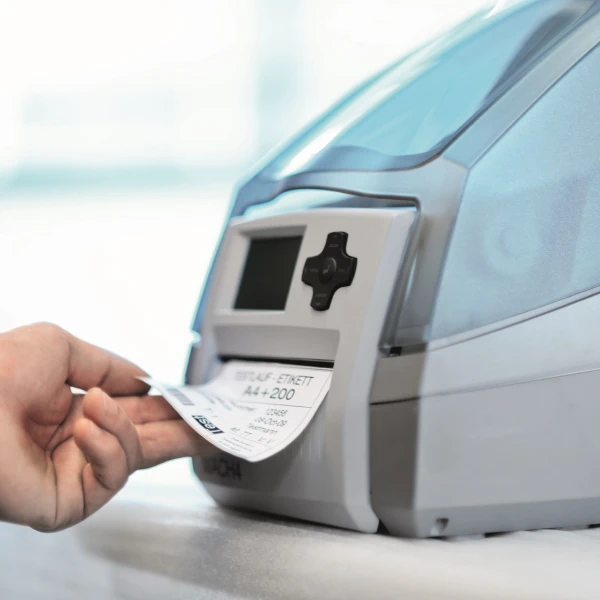
Barcode label printers are engineered to create crisp, scannable barcode labels for tracking and identification. While there are several printing methods available, thermal transfer remains the most durable and precise. All the printers featured on this page are thermal transfer printers built for demanding barcode applications.
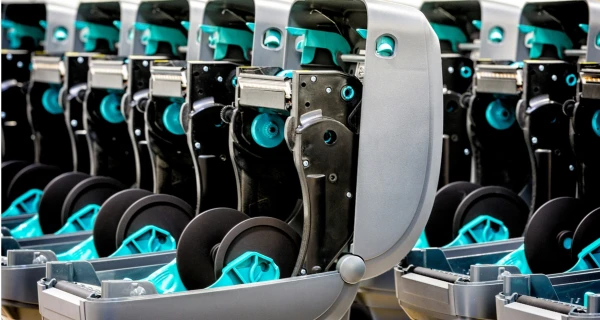
Thermal transfer printing uses heat to bond ribbon ink to the label surface, creating a long-lasting image. It’s the preferred method when barcodes need to resist smudging, chemicals, abrasion, or extreme temperatures. These printers are widely used across industries that require reliable identification under harsh conditions.
Produces highly durable barcode images
Compatible with many label material types
Works well in extreme heat or cold
Ideal for lab, warehouse, and industrial use
Barcode label printers come in different form factors depending on volume, environment, and workflow needs. The two most common types are desktop and industrial printers, each suited to specific labeling demands. Understanding the differences helps ensure long-term performance and print consistency.
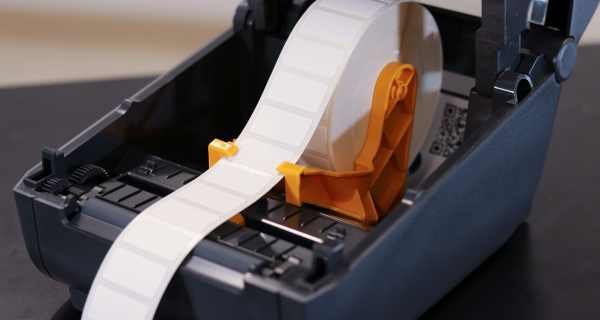
Desktop printers are compact and efficient, making them ideal for low to mid-volume applications. They’re commonly used in labs, hospitals, retail counters, and office settings where space is limited. Despite their small footprint, many offer advanced features and reliable thermal transfer printing.
Small footprint fits tight workspaces easily
Prints labels for tubes, trays, or packages
Supports mid-volume labeling across departments
Compatible with lab systems and desktop setups
Industrial printers are designed for high-throughput environments that run around the clock. These heavy-duty units are built to handle large label rolls and extended operation with minimal maintenance. They’re ideal for logistics, production lines, and rugged warehouse settings.
Built for continuous high-volume label output
Handles large rolls and ribbon spools
Designed for industrial and warehouse conditions
Withstands dust, heat, and demanding workflows
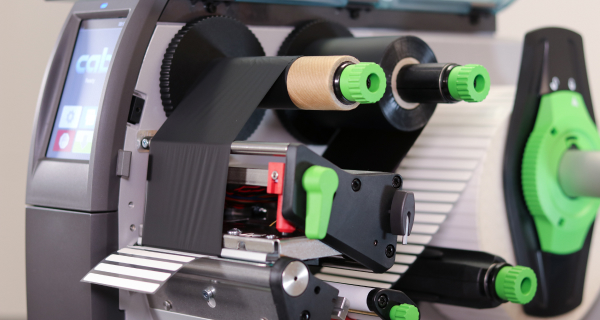
While most barcodes are printed in black for maximum contrast and scan reliability, color can be useful for background elements, borders, or color-coded identification. Thermal transfer printers generally do not support full-color printing. For durable color labeling, pre-printed or partially pre-printed labels are often the most effective solution.
RFID-enabled printers can encode data into RFID tags as part of the label printing process, allowing for non-line-of-sight identification and tracking. Some industrial barcode printers support this feature as an optional add-on. RFID labeling is a specialized process and typically used in logistics, asset tracking, or compliance-driven industries.
Printer applicators automate the print-and-apply process by applying each label immediately after printing. These systems improve accuracy, speed, and repeatability in high-throughput environments. They are commonly used in laboratories and packaging lines where manual labeling is impractical.
Not sure which printer fits your workflow? Answer a few quick questions and our team will follow up with expert recommendations tailored to your needs.
These thermal transfer printers represent a range of options across volume, environment, and use case. From compact desktop models to heavy-duty industrial units, each is designed for dependable barcode printing. Explore key features at a glance to find the right fit for your labeling needs.
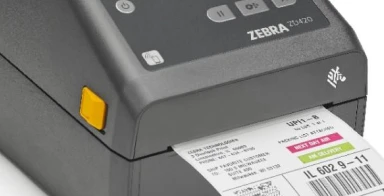
Compact desktop printers built for low- to mid-volume tasks in labs, clinics, and retail. Known for reliability and ease of use.
Desktop-sized for tight workspaces
Available with multiple connectivity options
Supports 203 or 300 dpi resolution
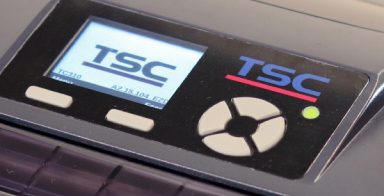
Reliable desktop printers for small labels and daily workflows. Compact yet powerful, offering multiple dpi options and easy media handling.
Desktop printer for daily labeling tasks
203 and 300 dpi model availability
Easy-loading clamshell design
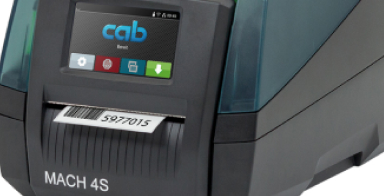
A compact industrial printer with center-aligned media guidance for consistent label feed. Offers a full-color touch display and high-resolution prints.
Centered label feed for media flexibility
Full-color display for easy navigation
Available in 300 or 600 dpi versions
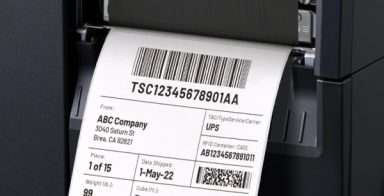
Mid-range industrial printers offering a balance of performance and footprint. Built for small to medium production environments.
Durable chassis for long-term use
Supports standard and large label rolls
Compact footprint compared to other models
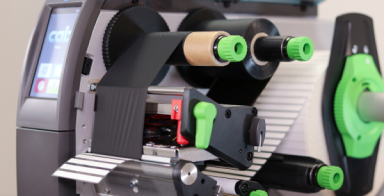
Versatile mid- to high-volume printer with a modular design. Available in multiple configurations to handle a wide range of labels.
Modular build with optional accessories
Supports continuous and die-cut labels
Designed for integration and scalability
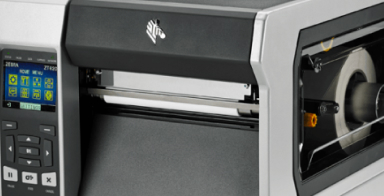
Industrial printers designed for high-volume output and 24/7 environments. Ideal for manufacturing, logistics, and automotive labeling needs.
Rugged industrial construction
Compatible with large label and ribbon rolls
Select models support RFID encoding
Barcode label printers use heat and precise control systems to produce sharp, scannable barcodes on label materials. Thermal transfer printing, the method used by all featured models, involves transferring ink from a ribbon to the label via a heated printhead. This method delivers durable, high-contrast results suitable for demanding environments.
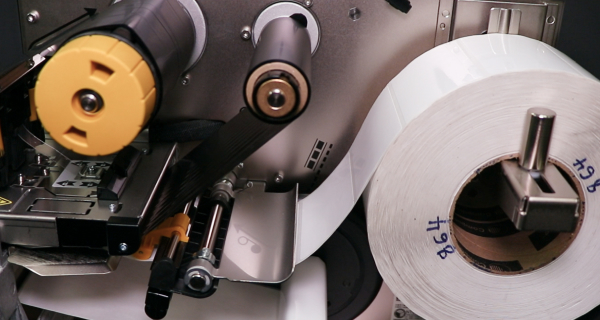
In thermal transfer printing, a heated printhead applies pressure and heat to a ribbon, melting ink onto the label surface. This creates a long-lasting image that resists smudging, chemicals, and abrasion. The method is highly compatible with synthetic labels and performs well across a wide range of temperatures.
Ink is transferred from ribbon to label
Heat and pressure activate the image transfer
Works with paper and synthetic face stocks
Provides sharp, durable barcode printing results
The printhead contains heating elements that are activated in precise patterns to form barcode images. These elements must maintain even heat distribution and pressure for optimal quality. Printheads are consumable components and should be cleaned regularly to extend their lifespan.
Ribbon and label stock must move in sync for clean transfers. Many printers use sensors to maintain alignment and detect gaps, black marks, or notches. Media handling features vary by printer but can include center alignment, edge alignment, and adjustable guides.
Barcode resolution depends on the density of heating elements, usually measured in dots per inch (dpi). Higher dpi is used for smaller barcodes or labels with limited space. Common resolutions include 203, 300, and 600 dpi depending on application needs.
Thermal transfer printing is the standard for barcode labels that must withstand time, handling, and exposure. It delivers consistent, high-contrast images that scan reliably across environments and industries. The method supports a wide range of label materials, including synthetics required for cryogenic, chemical, or outdoor use.
Ribbons can be tailored for specific resistance properties, such as resin for harsh chemicals or wax for economy. Compared to direct thermal printing, thermal transfer offers better durability and a longer print lifespan. The process also supports small-scale and large-scale operations with consistent output. For critical labeling tasks, thermal transfer remains the most dependable barcode printing solution.
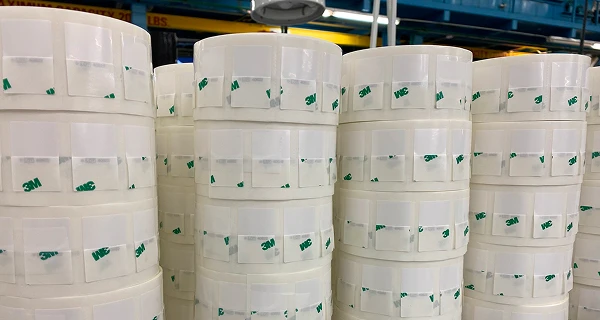
Print quality starts with the hardware, but consistency comes from alignment, heat settings, and supply pairing. Even the best printer can produce unreadable barcodes if the ribbon and label aren’t matched to the job.
Getting the most out of a barcode label printer depends on more than just the hardware. Factors like print resolution, ribbon selection, and alignment all impact barcode quality and scan reliability. These tips can help improve accuracy and reduce waste across labeling workflows.
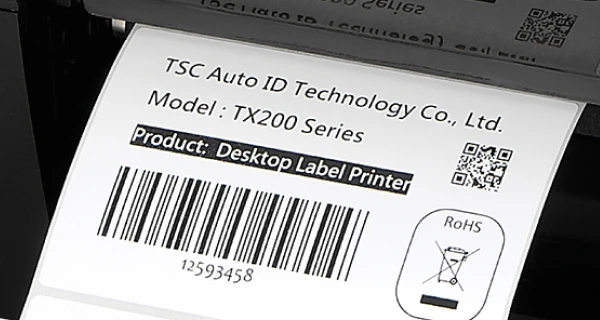
Print resolution, measured in dots per inch (dpi), affects how sharp and readable your barcode will be. Lower dpi is sufficient for large barcodes, while small or dense barcodes may require higher resolution. Choosing the right dpi ensures the barcode can be scanned reliably across devices and distances.
Use 203 dpi for standard barcode sizes
Choose 300 dpi for tighter label layouts
Opt for 600 dpi for high-density barcodes
Match dpi to scanner and label design
Thermal transfer ribbons come in three main types—wax, wax/resin, and resin—each suited to specific materials and conditions. Using the right ribbon improves image durability and reduces printhead wear. The wrong ribbon can lead to smudging, fading, or poor adhesion.
Wax ribbons work best with paper labels
Resin ribbons resist chemicals and abrasion
Wax/resin balances durability and print quality
Match ribbon type to label material used
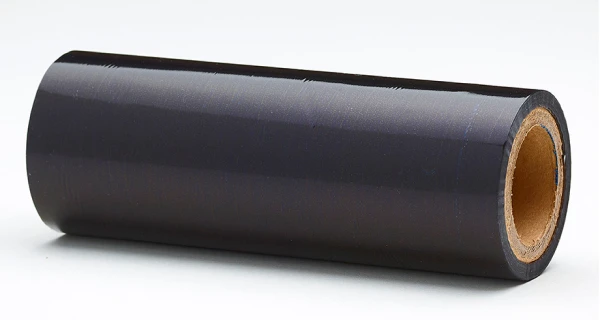
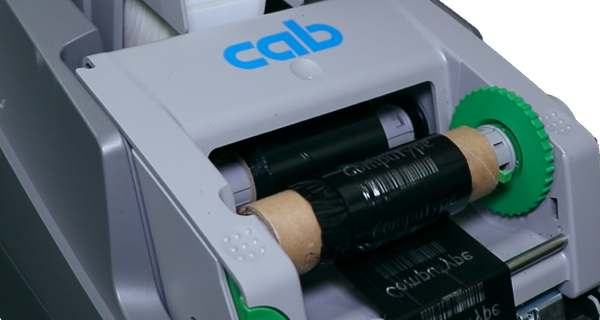
Common barcode issues include misalignment, poor contrast, and fading over time. Most can be avoided through proper printer setup, media calibration, and maintenance. A few simple adjustments can make a significant difference in long-term barcode performance.
Keep printhead clean and regularly inspected
Calibrate label and ribbon feed correctly
Use consistent pressure across the printhead
Choose high-contrast designs for better readability
Barcode printers perform best with regular upkeep and proper supply selection. Clean printheads, correct ribbon alignment, and quality label stock all play a role in print clarity and equipment longevity. This section outlines key steps to maintain performance and avoid downtime.

Thermal transfer printers are built for durability, but they still require consistent maintenance. Printheads can degrade over time if not cleaned properly, and media misalignment often leads to costly errors. Ribbons should be matched carefully to the label material and application environment. Supplies like labels, ribbons, and cleaning tools must meet the printer’s specifications. A few preventative steps can significantly reduce breakdowns and print quality issues.
Clean the printhead regularly with approved tools
Replace ribbons before they cause print gaps
Store labels and ribbons in stable conditions
Use compatible media to avoid feed problems
Preventative maintenance also protects the printer’s most expensive components, including the printhead and platen roller. Regular checks for debris, dust, or adhesive buildup can extend printhead life and preserve barcode sharpness. Choosing high-quality supplies improves print consistency and reduces waste. Supplies that don’t match printer settings or environments can cause frequent misfeeds or smudging. Ultimately, staying proactive with both maintenance and materials results in fewer disruptions and longer printer lifespan.
Using the right combination of label stock and ribbon is essential for consistent, high-quality barcode printing. Incompatible supplies can cause smudging, fading, or misaligned prints that lead to scan errors and wasted materials. Label adhesives must also match the application environment—especially in cold storage, high heat, or chemical exposure.
Ribbons should be selected based on the label material and required durability, such as resin for abrasion resistance or wax for short-term use. Printers are designed to work within specific media tolerances, including thickness, width, and core size. Using out-of-spec supplies can cause feed errors or premature printhead wear. Confirming compatibility before use helps extend printer life and ensures barcodes remain readable.
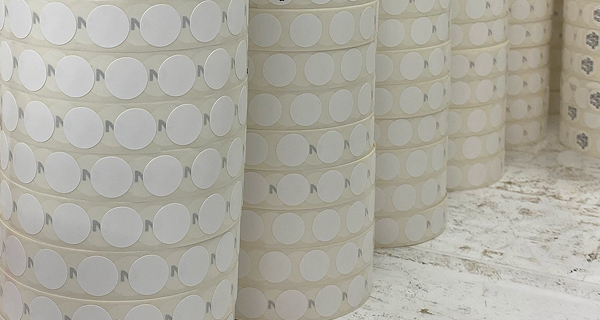












© Computype 2024
© Computype 2024
Take advantage of our volume discounts for bulk orders. Reach out to us for a personalized quote tailored to your needs.
"*" indicates required fields